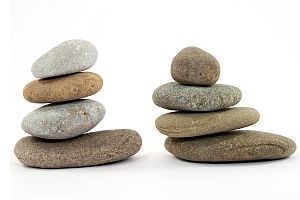Chiropractor Wilmington NC: What is Complementary and Alternative Medicine?
When most people hear the term “mainstream medicine”, they probably have a pretty accurate intuitive understanding of what it means. It refers to the standard care that patients receive in doctors’ offices and hospitals across the United States. However, there is also another term in modern healthcare—“complementary and alternative medicine”—that is often less well understood by the public. So what exactly is it, and why is it worth knowing? Our Chiropractor Wilmington NC explains more.
Let’s start with why it matters. In today’s healthcare environment, it’s important to understand these terms and how they relate to each other so that you can make the right treatment choices for yourself and your family and have appropriate expectations of various healthcare providers. This is especially true if you have a medical issue that mainstream (also known as “conventional”, “Western” or “allopathic”) medicine doesn’t seem to be able to help you with. This is where complementary and alternative medicine (CAM) often comes in.
First of all, complementary medicine and alternative medicine are not interchangeable terms—they actually refer to two separate approaches to diagnosis and treatment. Here’s the difference: Complementary medicine is meant to be used alongside mainstream medicine, while alternative medicine is meant to be used on its own, instead of mainstream medicine. For instance, a complementary medical treatment could involve undergoing acupuncture along with more standard cancer treatments, while an example of alternative medicine might be treating heart disease with chelation therapy (which aims to eliminate excess metals from the blood) in the place of using a typical Western medicinal approach.
Altogether, 40% of American adults use some form of CAM. Most Americans prefer the complementary medicinal approach and relatively few actually opt out of mainstream healthcare altogether in favor of alternative methods.
Interestingly, as complementary and alternative medical treatments are tested and used, they often eventually become conventional or standard care. This means that the boundary between mainstream medicine and CAM shifts with time. At present, the following areas are classified by the National Center for Complementary and Alternative Medicine as complementary and alternative medicine:
- Whole medical systems: Whole medical systems include homeopathy, naturopathy, and ancient healing systems such as Ayurveda from India and traditional Chinese medicine.
- Mind-body medicine: Examples of mind-body connection techniques include meditation, prayer, and relaxation and art therapies such as music and dance.
- Biologically based practices: These practices include the use of dietary supplements and herbal remedies sourced from nature. These include herbs such as ginseng, ginkgo, and Echinacea. Other dietary supplements include selenium, glucosamine sulfate, and SAMe. Herbs and supplements come in the form of teas, oils, syrups, powders, tablets, and capsules.
- Manipulative and body-based practices: These practices include chiropractic and osteopathic manipulation and massage, using touch to influence and heal specific parts of the body.
- Energy medicine: According to the National Center for Complementary and Alternative Medicine, “Energy therapies involve the use of energy fields. They are of two types:
- Biofield therapies are intended to affect energy fields that purportedly surround and penetrate the human body. The existence of such fields has not yet been scientifically proven. Some forms of energy therapy manipulate biofields by applying pressure and/or manipulating the body by placing the hands in, or through, these fields. Examples include qi gong, Reiki, and Therapeutic Touch.
- Bioelectromagnetic-based therapies involve the unconventional use of electromagnetic fields, such as pulsed fields, magnetic fields, or alternating-current or direct-current fields.”
As you can see, complementary and alternative medicine offers a very wide variety of treatment options. Before undergoing any CAM therapies, you should always ask your healthcare professional a number of important questions:
- What benefits can you expect to receive from the therapy over what period of time?
- What risks and side effects are associated with the therapy? How likely and how serious are they?
- Do the known benefits of the therapy outweigh the risks?
- Will the therapy interfere or interact with other treatments—conventional or CAM—you’re undergoing?
- What costs are associated with the therapy? Is it covered by your health insurance?
Also, always be sure to fully research the specific CAM therapy you’re considering and use your primary care physician (usually an MD or a DC) as a resource for advice and referrals. Contact our chiropractor Wilmington NC office today for more information.


